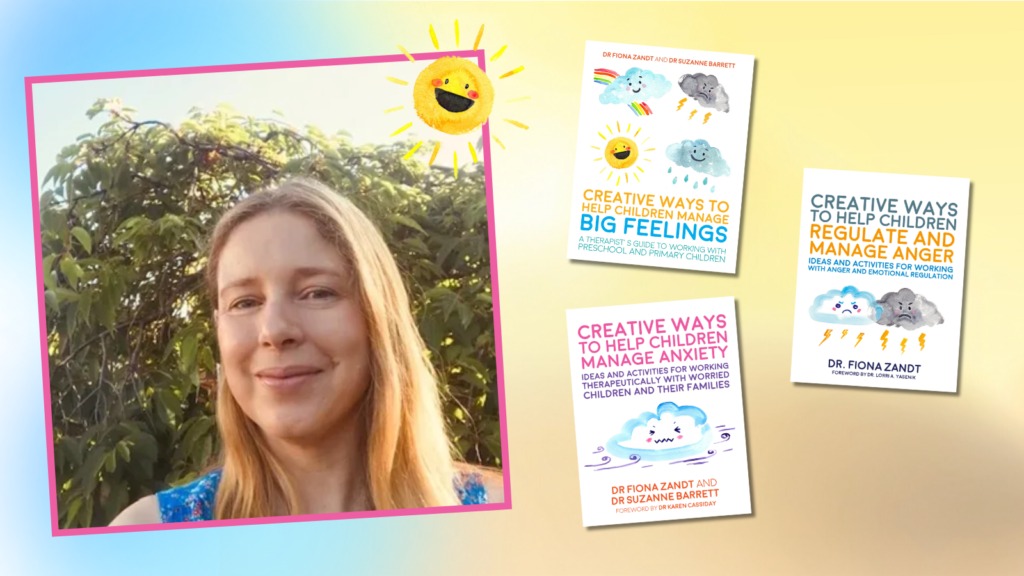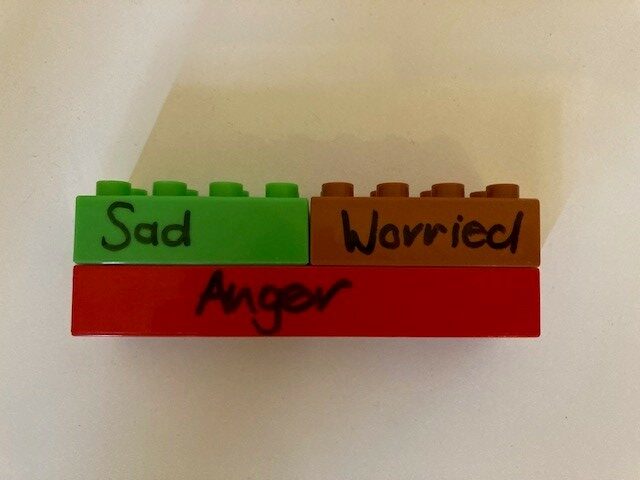
Building Blocks of Emotion: Helping Children Understand Big Feelings Through Play
This blogpost by the author of the Creative Ways series Fiona Zandt shares an engaging and practical method for helping children understand and regulate their emotions, using a playful activity with plastic interconnecting blocks. The approach is particularly fitting in the context of World Children’s Day, which emphasises the importance of supporting children’s well-being, emotional development, and rights.
Sometimes when I have a family sharing about a time their child struggled with a big emotional outburst, I’ll suggest that we use the plastic interconnecting blocks to explore the different feelings that came up. When the child names a feeling they experienced, such as fear or anger, I’ll encourage them to choose a block that is a good colour and size for that feeling. Then, either the child or I will write the feeling word or draw that feeling onto the block with a whiteboard marker.

As we work through what happened, we can add other feelings, choosing different blocks and again marking these before connecting the block to the other feeling. Some children may notice only two feelings, while others will name more.
Regardless of the number of feelings a child labels, the blocks help children organise their feelings and understand that we often have more than one feeling in a given situation. Further blocks can be added as we play through or chat about the child’s experience and uncover more feelings. I encourage the family to take a photo of the blocks as a take-home reminder before they are wiped clean and packed away.
Simple activities like this can help children understand and organise their feelings, supporting them to think about feelings that might be hidden underneath and explore the idea of mixed feelings. Anger, for example, is often a secondary emotion, and this activity can enable a child to think about other feelings, such as the upset or embarrassment they may have been experiencing.
For example, a child who has expressed anger in the context of needing to go to school may be able to communicate that they feel anxious as well as angry about doing so. Indeed, anxiety and anger commonly go together, with many children expressing their worries through aggression, defiance, and avoidance. Most children above the age of seven or eight can understand mixed feelings and can be readily engaged in activities around this.
Often when thinking about emotional regulation, families focus on what their child can do to shift how they feel. In part, this seems to come from our discomfort with feelings like anxiety and anger and our desire to stop or fix these emotions. Emotional regulation, however, is about connecting to our feelings and being able to respond to these thoughtfully. Naming our emotions helps us to organise and engage with our feelings and is regulating in and of itself.
Having someone who cares about us support us in this and empathise with our feelings is particularly powerful. Even as adults, most of us continue to regulate in the context of our close relationships, sharing our feelings with those we love and trust. Having the chance to name feelings and have these validated is especially important for children. The experience of being regulated by grown-ups allows children to gradually manage their emotions more independently as they grow.
Choosing the feelings they write on the blocks allows children to name their experience and have others empathise with them. Validating the feeling is different from ratifying the behaviour the child engaged in, and helping grown-ups to make this distinction is often a helpful step. For many of the children who come to therapy, naming emotions is something they’ve had little experience of, so often we need the support of their grown-ups who can offer tentative guesses about how their child was feeling at the time.
When grown-ups are involved in this manner, they begin to better understand their child’s reactions and are more able to anticipate the situations that might lead to big feelings. They often feel more confident about naming their child’s feelings at home, which is a key regulation strategy. Encouraging the noticing and naming of feelings, particularly when grown-ups catch these feelings early, can lessen bigger emotional outbursts.
Understanding all of the different feelings they experience can support children and grown-ups to explore what these feelings might be communicating. Having a curiosity about these feelings helps us to respond thoughtfully. For example, the child who shares that they have some worry underneath their anger and refusal to attend school may be able to communicate that they are finding the schoolwork very challenging and are therefore worried about completing it.
Understanding this may prompt some further discussion or assessment of the child’s learning and could support some modifications at school that enable them to feel more able to manage academic tasks. Feelings can provide lots of important information: emotions let us know when something needs to change and remind us of what is important to us. They protect us, prompt us to consider our needs, and help us to communicate these to others. Helping a child to organise their feelings and creating a space to reflect on what these feelings might communicate is respectful and encourages thoughtful responding.
When grown-ups are able to hold this space for children, opportunities for scaffolding, modification, and engaging in problem-solving are created.
Grown-ups also benefit from organising and exploring their own feelings. A parent who feels anger as well as fear in response to their child’s anxiety may, in talking this through, be able to recognise that they lacked an opportunity to sit with their own anxieties in childhood. Often this increased awareness around their own responses allows grown-ups to reflect more thoughtfully on how they want to respond.
Organising and being curious about our feelings is an important component of emotional regulation. We all benefit from being curious about our feelings, so lean in and make space for all of your different feelings. And the next time you are working with a child who has some big feelings, grab your blocks and a whiteboard marker and explore all of their feeling parts.
Fiona Zandt is the author of Creative Ways to Help Children Manage Big Feelings, Creative Ways to Help Children Manage Anxiety and Creative Ways to Help Children Regulate and Manage Anger. Explore each of Fiona’s books here.
